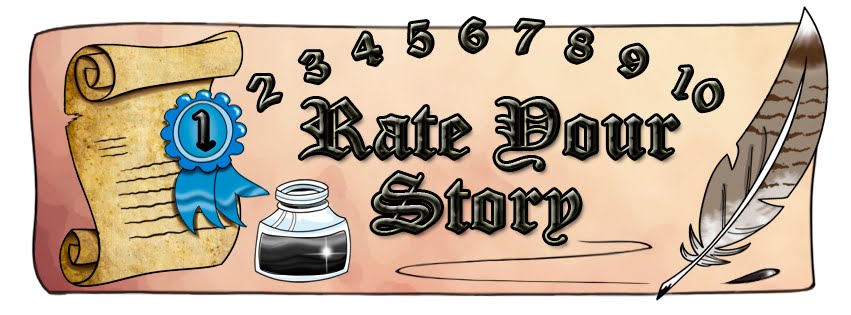 The only writers that don’t experience rejection are the
ones that don’t attempt submission. Yeah, rejection stinks, but not even trying
stinks more. If rejection is an inevitable part of the process, then smart
writers learn strategies to deal with it. But first, you have to understand
what’s going through your head. Here are three common (if simplified) stories
we tell ourselves about rejection:
The only writers that don’t experience rejection are the
ones that don’t attempt submission. Yeah, rejection stinks, but not even trying
stinks more. If rejection is an inevitable part of the process, then smart
writers learn strategies to deal with it. But first, you have to understand
what’s going through your head. Here are three common (if simplified) stories
we tell ourselves about rejection:- It boils down to innate ability: People with talent get accepted. I got rejected. Ergo, I have not talent.
- It’s the industry, stupid: Do you know the odds of being published? Of course I got rejected. Publishing’s too tough.
- It’s a roll of the dice: Will the right editor see the right manuscript at the right time? Getting published is all about luck.
Those three stories have one very potent similarity: they
take the control out of your hand. Most of
us have those niggling (or chasming) thoughts of self-doubt – about our talent
and/or our chosen vocation. When a rejection comes in, it just affirms what we knew to be true all along. And when you think
about the process that way long enough, anything other than quitting seems
insane.
Then there’s one last way of understanding rejection. Let’s
call it the eye of the tiger story. It’s the story that acknowledges that, yes,
the publishing world is unpredictable and tough, but you are tougher. Garnering
rejections is just one part of the effort you need to put in to arrive at your
goal. And effort is nothing to shy away from. It is a powerful story that all
successful writers share, in one form or another.
The Five-fold Path of
Indulgence
You will be surprised how effectively changing your perception of rejection affects your reaction to it. But let’s face it: it
will rarely give you a warm and cozy feeling. That’s where coping mechanisms
kick in. In a nutshell, be good to yourself.
Indulge in Your
Feelings
Rejection stings. It aches. It makes you feel rotten,
nauseous, angry. More importantly, it makes you want to dive head-first into
the closest pint (gallon?) of cake batter ice cream. Whilst pummeling a pillow. And screaming at
that character you love to hate in that HBO series you hate to love. As the
tears pour down. Reach out to your partner, your critique buddies, your cat –
heartache need not be a solitary activity.
Regardless of how the details shake out, throwing yourself a
pity party is a perfectly reasonable response to rejection – as long as it’s time limited. You are
only allowed to feel sorry for yourself for so long (how long depends on the
exact nature of the rejection, but let’s set a general limit of 24-hours). Yes,
the publishing business is tough. Yes, rejection sucks. Now channel that misery
or ire into your writing project and move on.
Indulge in Your
Dreams
Writers are a creative lot, and should not underestimate the
power of positive visualization. Vivian Kirkfield envisions an agent being
wowed by her submission. Dee Ann Waite emerges “donning armor and sword,
prepared for the fight ahead.” My
personal dream involves an invitation to The
Daily Show. Yours might involve a best seller list or Oprah’s book club.
Whether you are fueled by optimism or indignation, imagining a successful
future can give you the confidence to move forward.
Indulge in Your
Passions
Remind yourself why you write in the first place. Read that
book from that gobsmackingly talented author. Remember the people or events
that inspired you to start stringing words together. Look up inspirational
quotes. And, as author B. J. Lee
reminded me, know that there is something inherently valuable about writing
itself – regardless of what the publishing outcome is. Refocus, refresh, and resolve
to move forward.
Indulge in Your Craft
There’s no point attempting to deconstruct a vague rejection
letter – and most rejections will be boilerplate vague. But take any actual
feedback to heart. If you disagree with it, at least consider why the reader
had that response. Study new markets for your project.
But by far the best and most important way to deal with rejection is to KEEP WRITING. Nothing puts that auto-rejection that came seven months after submission into perspective like having another manuscript or two in the works.
There is one last key ingredient to handling rejection. Even if you spent every spare waking moment on your opus, you are not defined solely by your writing, and its worth is not defined by agents or editors. You are a beautifully complex creature that contains multitudes and can create worlds with the flick of a wrist. You have a body that needs good fuel and exercise. A mind that relishes in having a multitude of experiences to grow. A spirit that finds strength and comfort in community. You ARE an author, but not only that and the more different parts of yourself you can tend to, the more capable you will be of putting any rejection that comes your way into proper perspective – it is but a speedbump.







